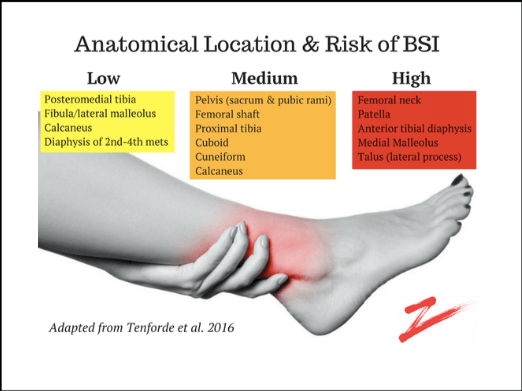

A stress fracture is a small crack(s) in the tibia caused by stress and overuse. We want you to feel better so you can perform better. If your shin splints are not responsive to treatment, your doctor may want to make sure you do not have a stress fracture.
RUNNING ON STRESS FRACTURE SHIN HOW TO
This book helps you understand how to change up your activity to avoid injuries.
RUNNING ON STRESS FRACTURE SHIN DOWNLOAD
We hope that anyone concerned about a stress fracture will download and read our free eBook titled, How to Stay Active When You’ve Overtrained. The soles need to have the cushion that your body needs to absorb impact. Shoes that may look fine on the outside can be overused on the inside. And be sure to wear proper fitting footwear that is not worn out. If you’re a runner, increase your mileage slowly so that you don’t overburden your bone structure.

HOW TO AVOID SPORTS INJURIES IN THE FUTURE Your doctor can indicate the percentage to start at and then you can begin working back up to 100% of your body weight. This gives you the cardio benefit of running with less impact on your injury as it heals. This technology allows you to reduce the gravitational pull on your body as you run by up to 100% of your body’s weight. Once your doctor says it’s OK to begin running or performing impact exercises again, the AlterG machine can be used to gradually bring you back to your running condition and even help you improve your performance. For instance, the kick that is part of the butterfly stroke may be too much impact against your shins. You can also head to the pool at the gym or in your backyard to swim laps as long as you aren’t causing impact against the water from kicking. If you have a boot and/or are on crutches, it’s possible to use a lift chair to get in and out of the therapy pool so that you don’t have to use stairs and possibly cause more injury to the fracture. Getting into a warm pool with a certified aquatic therapy specialist, you will be guided through exercises that keep your muscles strong and can help with cardio conditioning, but does not cause impact on the stress fracture. If your doctor approves, we recommend starting with aquatic therapy.Įxercises in the water provide resistance without direct impact to the injury. You’re going to want to get up and do something. If you’re like most active people, it will be hard to sit around and wait for 6 - 8 weeks doing nothing but resting. If you’re having pain that goes away when you stop the activity or take weight off of the injured area, you should see an orthopedic specialist so they can take images that will determine if you have a stress fracture and will decide if you need a boot or cast. We often see patients who tried to increase their mileage too quickly or were not wearing proper footwear which resulted in a stress fracture. Repetitive impact from sports like running or gymnastics are typically the cause. If you're under 50, you need 400-800 IUs per day or 800-1,000 if you're over 50.Sometimes overtraining can cause a bone fracture in the tibia (shin bone) or one of the many small bones in our feet. Supplements are also an option, but always talk to your doctor first. You can also get vitamin D from sunlight on your skin, but going outside without sunscreen can put you at risk for sun cancers. Vitamin D is mainly found in fatty fish, such as mackerel, tuna, and salmon, as well as fortified foods like cereal, juices, and milk.Fortified orange juice, fortified tofu, canned salmon (with the bones), kale and other greens, and sardines are all good sources of calcium.

Dairy products are a good source of calcium, particularly ones fortified with vitamin D, which aids your calcium absorption. X Research source For women under 50 and men under 70, you need 1,000 milligrams of calcium a day after that, you need 1,200 milligrams. Doing so helps keep your bones strong, which may help reduce your chances of a stress fracture in the future. Ensure you're getting enough vitamin D and calcium in your diet.


 0 kommentar(er)
0 kommentar(er)
